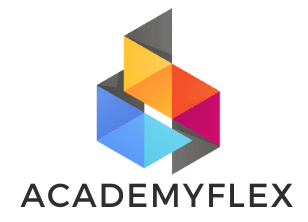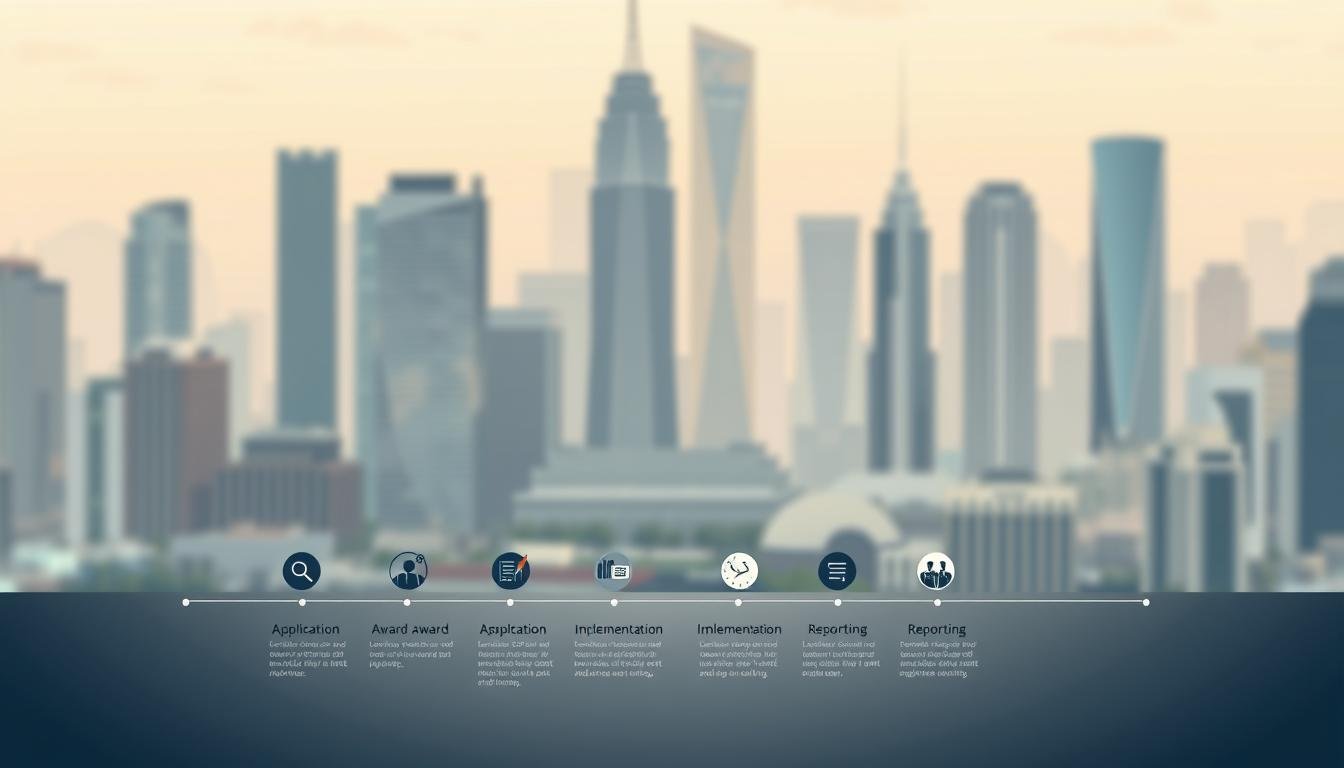Grant management and reporting
Did you know that poor grant management can hurt your organization’s funding and reputation? It’s not just about paperwork. It’s key to getting and keeping financial support. Every step, from writing proposals to final audits, needs to be done right.
Using the right grant management software can help a lot. It makes tracking budgets and following rules easier. But, many groups still use old ways, risking fines or missing out on chances. This guide will show how good reporting and tools can help overcome these issues.
Key Takeaways
- Grant management covers proposal writing, managing awards, and tracking rules.
- Not following rules can lead to audits and losing funding.
- Grant management software helps keep data in one place, cutting down on mistakes and improving teamwork.
- Good reporting builds trust with donors and helps get more grants.
- Working together across departments is key to meeting deadlines and financial goals.
Understanding the Fundamentals of Grant Management and Reporting
Grant management and reporting are key to a nonprofit’s success. They help ensure funds are used right and keep trust with donors. Important steps include clear records, on-time reports, and teamwork.
What Is Grant Management?
Grant management covers all steps from applying to final reports. It makes sure everything follows the donor’s rules and tracks progress. Main steps are:
- Creating grant guidelines
- Reviewing applications
- Handling money distribution
- Tracking project goals
Tools like Blackbaud make things easier. They offer analytics and keep all data in one place.
The Importance of Effective Grant Reporting
Good grant reports show you’re accountable. Donors check these reports to see if their money is making a difference. Reports also help nonprofits:
| Audit Type | Best Practices |
|---|---|
| Internal Audits | Regular account checks, staff training, safe tech systems |
| External Audits | Get ready before, talk clearly with auditors, fix issues fast |
Key Stakeholders in the Grant Management Process
Grant management needs teamwork:
| Role | Responsibilities |
|---|---|
| Grant Program Officer | Make guidelines, check applications |
| Financial Officer | Watch budgets, follow spending rules |
| Grants Administrator | Manage apps, keep records |
Clear roles and talking often helps avoid mistakes. Following best practices helps nonprofits meet their duties and get more funding.
The Complete Grant Lifecycle: From Application to Closeout
Getting grant funding is just the beginning. The grant journey has six key phases to keep projects on track. Each step needs careful planning to stay compliant and make a big impact.
- Identifying aligned grant opportunities through research and funder alignment.
- Building rapport with funders through ongoing communication and proposal alignment.
- Submitting polished applications with complete documentation and budgets.
- Accepting awards and finalizing legal agreements and project timelines.
- Managing day-to-day operations, including budget adherence and grant management and reporting deliverables.
- Completing final evaluations, submitting closeout forms, and securing funder sign-off.
The post-award phase is all about following grant compliance solutions closely. This includes submitting reports by specific dates. Missing these deadlines can lead to losing funding. Tools like NCR|GMS help track deadlines and budgets to avoid mistakes.
At the end, you need to check all deliverables, financial records, and equipment. Funders review the final reports and might do audits to check if everything is okay. Using a centralized platform makes this easier, reducing the work needed during audits.
Mistakes like missing deadlines or not having all the documents can ruin a good proposal. Using compliance tools and reporting in real-time helps avoid these problems. This way, you build trust with funders and open doors for more opportunities.
Setting Up Your Grant Management Infrastructure
Creating a strong infrastructure is crucial for effective grant management and reporting. Begin by gathering a team from finance, program staff, and compliance. This team keeps everyone on the same page with what funders expect. Flexigrant’s Award Data API makes it simpler to manage budgets and timelines.
Creating a Grant Management Team
- Assign clear roles: Choose a lead for best practices for grant management, a finance expert, and a compliance officer.
- Include program staff to ensure grant goals match daily work.
- Have weekly meetings to tackle problems quickly.
Developing Standard Operating Procedures
Write down steps for submitting proposals, making budget changes, and grant management and reporting deadlines. Use Flexigrant’s templates for consistent forms and checks. Their Award Phase tools help keep everything in line with federal rules.
Establishing Communication Channels
Use tools like Slack or Asana for updates. Hold monthly meetings with funders to report progress. Flexigrant’s features make sharing data easier between teams and partners.
Best Practices for Grant Management
Effective grant management means turning funding into real impact. Start by using best practices for grant management. These practices help you stay compliant and keep projects on track. They save time, cut down on mistakes, and build trust with funders.
Documentation Standards
Keep your records organized with both digital and physical systems. Have a central spot for all applications, award letters, and financial reports. Use templates for common content like project summaries or budget justifications.
Store all emails, meeting notes, and agreements with funders in one place.
Timeline Management
Plan out your project phases with a shared calendar. Mark important dates for reporting, deliverables, and audits. Use software for automatic reminders on key dates.
If delays happen, write down the changes and tell everyone right away.
Budget Tracking Techniques
Use real-time tracking tools to match spending with grant rules. Flag any costs that aren’t allowed and move them to non-sponsored accounts. If priorities change, get sponsor approval to adjust the budget.
Compare actual spending to planned budgets often to avoid overspending.
By following these steps, you strengthen grant compliance solutions. This ensures funds are used as planned. A trained team and centralized systems make complex tasks easier. They help organizations meet their obligations and open doors for future opportunities.
Essential Grant Reporting Requirements
Knowing grant management and reporting rules is key to meeting funder needs. Reports must match the terms set by funders, like government or foundations. They should include financial details, program results, and feedback from stakeholders.
- Track project tasks by location, date, and time to document progress.
- Use metrics like cubic yards of vegetation removed for measurable outcomes.
- Include “before” and “after” photos to visually demonstrate impact.
- Compile resident testimonials and thank-you letters to showcase community engagement.
- Share successes via media and social platforms using free resources like USFA materials.
Reports are often needed at set times, like monthly or yearly. Tools like grant reporting tools make collecting data easier. The Bill and Melinda Gates Foundation uses online platforms, while the National Science Foundation uses standard templates and training. Having a team member handle reporting helps solve problems fast. Training staff ensures they follow rules and make fewer mistakes.
Checking project results after they’re done, like how well they prevent wildfires, makes future grants stronger. Keeping detailed records of spending and results helps meet funder needs and improves programs.
Grant Management Software: Choosing the Right Solution
Choosing the right grant management software is key. It helps track budgets, follow rules, and measure results. Tools like grant accounting software make work easier, cut down on mistakes, and speed up tasks. First, figure out what you really need. Do you need detailed reports, to connect with other systems, or for many users to access it?
Features to Look for in Grant Management Software
- Real-time dashboards for budget and progress tracking
- Automated reporting and compliance checks
- Secure data storage with encryption and access controls
- Integration with accounting tools like QuickBooks or Excel
Popular Grant Management Platforms Comparison
| Feature | Blackbaud | GrantStation | ProPricer |
|---|---|---|---|
| Budget Tracking | ✔️ Advanced | ✔️ Basic | ✔️ Customizable |
| Compliance Tools | ✔️ Federal/state rules | ✔️ Custom templates | ✔️ Audit trails |
| Pricing | Subscription-based tiers | Pay-as-you-go | Flat-rate annual fees |
Implementation Strategies for New Software
Start with a small team to test the software first. Offer training on key features like reports and expense tracking. Then, add more features like reminders for deadlines. Make sure to check in with the vendor to keep goals in line.
Choose software that works well with your current grant accounting software. Look for 24/7 support and easy-to-use interfaces. This is important for teams that aren’t tech-savvy.
Financial Management for Grant Recipients
Effective grant management and reporting relies on good financial habits. Nonprofits must keep track of every expense related to federal grants. This ensures they follow cost rules and meet audit needs. Using grant accounting software can make this easier, cutting down on mistakes and saving time.

- Monthly bank reconciliations by staff without signing authority
- Pre-approval processes for credit card purchases and travel expenses
- Time tracking systems linking staff hours to specific grant projects
- Inventory controls for grant-purchased equipment
| Grant Type | Financial Management Considerations |
|---|---|
| Reimbursable | Track expenses meticulously for reimbursement requests |
| Advance Payment | Ensure funds are spent according to approved timelines |
| Cost-Sharing | Document non-federal contributions with receipts and invoices |
Tools like IntelliGrants IGX make it easier to track spending and create reports like the SEFA. They also keep an audit trail. These systems alert you to costs that aren’t allowed and track contributions from other sources. This helps nonprofits avoid penalties and show they are accountable to their funders.
Grant Accounting Software: Streamlining Financial Reporting
Managing grant finances doesn’t have to be hard. Grant accounting software makes tracking expenses easy. It ensures you follow rules and creates reports quickly. These tools help connect funding sources with financial systems, saving time and reducing mistakes.
Integration with Existing Financial Systems
Seamless integration is crucial. Top solutions like SmarterSelect and Serenic Navigator work well with QuickBooks and Excel. They prevent manual data entry by syncing data in real-time.
Automating Grant Expense Tracking
Automated features reduce manual work. Tools like Submittable and Bloomerang offer:
- Expense categorization aligned with grant budgets
- Automated receipt capture and approval workflows
- Custom coding structures to track restricted funds
Generating Financial Reports
Compliance-ready reports are easy to get. Grant reporting tools like Foundant’s Navigator provide:
- Budget vs. actual spending dashboards
- Pre-built templates for funders
- Real-time milestone tracking
| Software | Integration | Expense Automation | Reporting Features |
|---|---|---|---|
| SmarterSelect | QuickBooks, Excel | Auto-categorization | Real-time compliance checks |
| Submittable | API-enabled | Validation checks | Custom analytics |
| Serenic Navigator | Multi-module sync | Budget coding tools | Impact dashboards |
With these tools, nonprofits can focus on their mission. Choose software that fits your needs, from Bloomerang’s $119/month plans to Serenic’s enterprise options. Start smart to avoid spending too much time on spreadsheets.
Ensuring Grant Compliance
Compliance is key in grant management. It helps avoid penalties and keeps trust with funders. Rules like the Uniform Guidance (2 CFR 200) guide what costs are allowed and how to audit.
Federal Grant Compliance Requirements
Agencies like the OMB, NSF, and NIH have strict rules. These include following procurement rules, meeting performance goals, and passing audits. The OMB Compliance Supplement helps with audit procedures for grants.
State and Local Compliance Considerations
States and local areas have their own rules. Teams must work with legal experts to make sure these rules match federal ones. Checking these rules helps avoid problems.
Grant Compliance Solutions and Tools
Technology makes compliance easier. Tools like CommunityForce help track and report. Important strategies include:
- Regular training programs
- Automated documentation systems
- Third-party compliance audits
| Risk | Solution |
|---|---|
| Financial mismanagement | Use compliance software |
| Inadequate reporting | Automated reporting tools |
| Non-compliance with audits | Regular internal audits |
Creating a compliance culture needs clear policies and ongoing learning. By focusing on these, organizations can meet their obligations and make the most of grants.
Measuring and Reporting Grant Outcomes
Effective grant management and reporting means tracking real-world changes. Outcomes are now key, showing lasting benefits like better literacy or less pollution. They differ from outputs, which count programs run, but don’t show lasting effects.
How data is collected varies by project. Surveys and tests measure education programs. Environmental grants might use sensors or GIS to track changes in water or land.
Honest reporting is crucial. It shows challenges faced, building trust with funders. Tools like automated dashboards in grant systems make tracking progress easier.
- Use surveys and standardized tests to measure education or health outcomes
- Environmental grants track data via remote sensors or GIS
- Automated grant reporting tools compile real-time data for clear visualizations
Progress is measured by key questions: Are funds used well? Do results meet goals? Technology helps answer these. Dashboards show budget and timeline status, while surveys capture feedback.
Outcomes-focused reporting is more than following rules—it drives better results. By linking data to program changes, organizations show funders real results. The right tools turn data into stories that prove impact and guide future efforts.
Grant Reporting Tools That Maximize Efficiency
Getting better at grant reporting begins with the right grant reporting tools and grant management software. These tools make handling data easier, cut down on mistakes, and help teams work better together. They shine in three main areas: showing data clearly, being easy for teams to use, and letting people access information on their phones.
| Tool | Key Features |
|---|---|
| Blackbaud Grantmaking | Automated workflows, compliance tracking, real-time dashboards |
| Fluxx | Data visualization, workflow automation, mobile reporting access |
| Good Grants | Real-time analytics, multi-user collaboration, audit trails |
| Instrumentl | Mobile app for field data capture, deadline alerts, budget tracking |
Tools that show data as charts and graphs make it simple to see trends. Platforms like Fluxx and Blackbaud use dashboards to show how programs are doing. Good Grants lets teams work together in real-time, cutting down on mistakes. Mobile apps like Instrumentl let staff update data right where they are, keeping information fresh.
- Automate reports with software like WizeHive to cut manual work
- Choose tools with multi-user access for seamless teamwork
- Mobile apps enable field staff to submit data instantly from anywhere
Choosing the best grant management software means looking at what your team needs. Look for platforms that let you customize dashboards, work on phones, and keep records safe. These tools help nonprofits focus on making a difference while meeting grant requirements.
Overcoming Common Grant Management Challenges
Grant management challenges like staff turnover, budget overruns, and compliance gaps are common but solvable. Proactive strategies turn obstacles into opportunities for growth. Here’s how to tackle them effectively:
- Staff Turnover: Build continuity with onboarding programs and cross-training. Use tools like QuickBooks to centralize financial data, ensuring new staff can quickly access critical information.
- Budget Mismanagement: Adopt budget tracking software to monitor spending in real time. Define clear KPIs aligned with grant goals to spot issues early.
- Compliance Issues: Invest in grant compliance solutions that automate rule tracking and audits. Regular training sessions keep teams updated on regulatory changes.
- Reporting Delays: Use data visualization tools to simplify complex data into clear dashboards. Centralized platforms streamline reporting cycles and reduce errors.
Proactive steps like encrypted data systems and external audits strengthen trust with funders. Best practices for grant management include regular team training and adopting integrated software for seamless program and financial tracking. Partnering with consultants fills skill gaps while real-time monitoring tools keep projects on track. By addressing challenges early, organizations can maintain grantor relationships and secure future funding. Turning setbacks into learning moments builds resilience and positions teams for long-term success.
Advanced Strategies for Multi-Grant Management
Managing many grants is more than just tracking. It needs strategic planning. Advanced grant management and reporting practices help nonprofits meet many demands and make a big impact. Tools like grant management software are key for organizing and aligning resources.
Portfolio Approach to Grant Management
See grants as a single portfolio to match with your goals. Use grant management software dashboards to track funding and adjust plans. Key steps include:
- Analyzing grant alignment with mission and capacity
- Visualizing funding streams with portfolio heatmaps
- Quarterly reviews to rebalance investments
Resource Allocation Across Multiple Grants
Make the most of staff and budgets by:
- Assigning staff based on grant expertise
- Allocating shared costs proportionally
- Use automated alerts for budget overruns
Consolidated Reporting Techniques
Streamline reporting with these methods:
| Technique | Description | Benefit |
|---|---|---|
| Unified Data Templates | Standardized forms for all reports | Cuts preparation time by 40% (data from GrantWatch 2023) |
| Automated Calendar Sync | Integrated deadlines across grants | Reduces missed deadlines by 65% |
| Impact Dashboards | Visual KPI tracking | Shows ROI to funders clearly |
Using these strategies with grant management software lets organizations grow their impact without adding to admin work.
Building Relationships with Grantors Through Effective Reporting
Building strong relationships with grantors is more than just meeting grant management and reporting needs. It’s about clear communication and keeping them updated. Tools like OmniStar’s grant reporting tools make it easy to share progress and milestones in real-time.
First, set clear expectations for timelines, what needs to be done, and how often to talk. Use grant reporting tools to send updates and track progress automatically. This cuts down on paperwork and stress.
Regular meetings, like quarterly calls, help solve problems quickly and celebrate wins together. Always be honest if there are delays. Explain the reasons and suggest how to move forward.
- Share project stories: Highlight beneficiary outcomes to humanize data.
- Request feedback: Ask grantors how they prefer information shared and adjust workflows.
- Recognize their priorities: Tailor reports to reflect their mission and values.
OmniStar’s platform makes working together easier. Teams can add documents and notes right in reports. This openness builds trust and shows you’re reliable. Every report is a chance to grow your relationship with grantors, turning them into long-term partners.
Preparing for Grant Audits: What You Need to Know
Getting ready for audits is key to keeping trust with funders and avoiding fines. Grant compliance solutions like IntelliGrants® IGX help keep records in order. Here’s how to make sure you’re ready for audits:
Audit-Ready Documentation Practices
Begin with a well-organized system. Follow best practices for grant management such as:
- Keeping all records in one place, like IntelliGrants® to track spending and approvals.
- Keeping records for 3-5 years after the grant ends, as the agreement says.
- Training your team on OMB Circular A-133 and UGG rules.
Common Audit Findings and How to Avoid Them
| Issue | Solution |
|---|---|
| Improper cost allocation | Use job cost tracking tools to align expenses with grant terms. |
| Lack of approval trails | Digitize sign-offs with audit-trail features in compliance software. |
| Inaccurate reporting | Automate reports using tools that sync with financial systems. |
Post-Audit Response Strategies
If auditors find problems, act fast. Here’s what to do:
- Go over the findings with your compliance team to find the main causes.
- Submit a plan for fixing things and when you’ll do it.
- Keep grantors updated to rebuild trust and avoid future problems.
Remember, audits are not just about following rules. They’re chances to improve grant compliance solutions and best practices for grant management. Stay ahead to ensure smooth audits and strong relationships with grantors.
Conclusion: Mastering the Art and Science of Grant Management
Grant management is a mix of creativity and detailed systems. By following best practices, organizations can make a real difference. The Community Health Project in Ruralville shows how being flexible and clear can win trust.
The Tech for Kids Initiative also shows the value of being adaptable. They changed their approach when they faced supply delays. This shows how important it is to be flexible in managing grants.
Good grant reporting is key to being accountable. It includes detailed stories, financial data, and visuals. The Ultimate Guide to Federal Grant Applications teaches the importance of starting early and being transparent.
It also talks about using data to improve strategies. Managing grants from start to finish is crucial for ongoing funding. Workshops like the 2023 Abuja Grant Writing event help improve these skills.
Being good at grant management means combining storytelling with data. Organizations that keep learning and use technology will stay ahead. By focusing on these areas, nonprofits can get more resources, stay compliant, and grow their mission.
The key to success is to always improve and learn from each grant cycle. Using the right tools and resources can help drive real change.
Source Links
- What is Grants Management? – https://www.ngma.org/what-is-grants-management
- Nonprofit Grant Management: Learning the Essentials – https://grantsplus.com/insights/blog/grant-writing-support/grant-management-guide/
- What is a Grant Management System? A Comprehensive Guide – https://www.fluxx.io/blog/what-is-a-grant-management-system-a-comprehensive-guide
- Grant management 101: Everything you need to know – https://resources.foundant.com/blog/grant-management
- Grant Management: Understanding the Basics for Grant Makers – https://blog.blackbaud.com/what-is-grant-management/
- The Grant Lifecycle | Grants.gov – https://www.grants.gov/learn-grants/grants-101/the-grant-lifecycle
- What Is the Grant Management Lifecycle? | IGX Solutions – https://igxsolutions.com/resources/blog/what-is-the-grant-management-process/
- PDF – https://hsema.dc.gov/sites/default/files/dc/sites/hsema/publication/attachments/grant-lifecycle-process-v2.pdf
- The Ultimate Guide to Grant Management: From Research to Closeout – https://www.impactinstituteco.com/blog/complete-grant-management-training
- Implementing Project Financial Management and Grants Management – https://docs.oracle.com/en/cloud/saas/project-management/24b/oapfm/overview-of-grants-management-configuration.html
- Integrating Our Grant Management System with Your Current IT Infrastructure: Best Practices | Flexigrant® – https://www.flexigrant.com/integrating-our-grant-management-system-with-your-current-it-infrastructure-best-practices/
- Grant management for nonprofits: top 6 best practices – https://resources.foundant.com/blog/grant-management-for-nonprofits
- Best Practices for Grant Management – https://www.bu.edu/research/funding-grants/grant-management-tools-resources/best-practices-for-grant-management/
- Best Practices in Grants Management – https://www.anafp.org/Best-Practices-in-Grants-Management
- Help your organization have success throughout a grant’s life cycle. – https://www.usfa.fema.gov/blog/the-importance-of-good-grant-reporting/
- Grant Reporting Best Practices | sopact – https://www.sopact.com/guides/grant-reporting-best-practices
- How to Choose the Right Grant Management System for Governmental Departments – https://www.fluxx.io/blog/how-to-select-grant-management-system-government
- 5 Tips for Selecting the Best Grant Management System – https://blog.blackbaud.com/need-a-new-grant-management-system-5-tips-for-selecting-the-best-gms-for-your-foundation/
- Microsoft Word – grant-financial-management-handbook2015 – https://www.archives.gov/files/nhprc/pdfs/grant-financial-management.pdf
- Financial Management Requirements for Award Recipients – https://www.hrsa.gov/sites/default/files/hrsa/grants/manage/financial-management-requirements.pdf
- Guide to Federal Grant Reporting & Accurate Financials | IGX – https://igxsolutions.com/resources/blog/guide-to-better-reporting/
- 4 Grant Reporting Software You Should Consider – https://www.smarterselect.com/blog/grant-reporting-software-to-consider
- Foundant Technologies – Software for Foundations and Social Good Organizations – https://www.foundant.com/
- Grant Management Software for Government: Streamline Application Management, Compliance & Reporting – https://karmaadvisory.com/grant-management-software-for-government/
- Best Practices for Ensuring Compliance in Grant Management – https://www.fluxx.io/blog/best-practices-for-ensuring-compliance-in-grant-management
- A Closer Look at Grant Compliance: What You Need to Know – https://www.communityforce.com/a-closer-look-at-grant-compliance-what-you-need-to-know/
- What is Grant Compliance, and Why is it Important? – https://www.smarterselect.com/blog/what-is-grant-compliance
- Examples of Grant Outcomes and How To Measure Them – https://www.instrumentl.com/blog/measuring-grant-success-outcome-reporting
- Grants Program Management: Measuring Outcomes – https://www.iqvia.com/blogs/2022/08/measuring-outcomes
- 12 Best Grant Management Software for Nonprofits – WildApricot – https://www.wildapricot.com/blog/grant-management-software
- 13 best grant management software solutions to maximize strategic funding – https://www.bonterratech.com/blog/best-grant-management-software
- Overcoming Common Challenges In Grants Management: A Practical Guide For Nonprofits – https://www.linkedin.com/pulse/overcoming-common-challenges-grants-management-practical-vswbe
- How Federal Agencies Can Overcome Common Challenges in Grant Management – https://www.mercadien.com/resource/how-federal-agencies-can-overcome-common-challenges-in-grant-management/
- Challenges in Grant Management: Overcoming Problems and Avoiding Red Flags – https://www.communityforce.com/challenges-in-grant-management-overcoming-problems-and-avoiding-red-flags/
- Top 6 Grant Management Best Practices | IGX Solutions – https://igxsolutions.com/resources/blog/how-to-manage-a-grant/
- 6 Strategies for Grant Management Success – https://www.donorperfect.com/nonprofit-technology-blog/fundraising-software/track-grant-funding/
- Guide to Creating Stronger Grantee Relationships – https://igxsolutions.com/resources/blog/guide-to-creating-stronger-grantee-relationships/
- How to Approach and Build Grant Funder Relationships in 2025 – https://www.instrumentl.com/blog/how-to-build-grant-funder-relationships
- How to Manage Grantor Grantee Relationships | OmniStar – https://www.omnistar.cloud/insights/how-to-manage-grantor-grantee-relationships
- How to Prepare for Your Grant Audit | IGX Solutions – https://igxsolutions.com/resources/blog/how-to-prepare-for-grant-audits/
- 6 Ways to Be Prepared for Your Federal Grant Audit – https://www.cohenco.com/knowledge-center/insights/july-2024/6-ways-to-be-prepared-for-your-federal-grant-audit
- Preparing for Grant Management and Single Audits* | Carr, Riggs & Ingram – https://www.criadv.com/insight/preparing-for-grant-management-and-single-audits/
- Decoding the Art of Grant Reporting – https://www.linkedin.com/pulse/decoding-art-grant-reporting-queen-israel-3pp8f
- Grant Management for Federal Grants: A Detailed Guide – https://www.linkedin.com/pulse/grant-management-federal-grants-detailed-guide-queen-israel-knxkf








